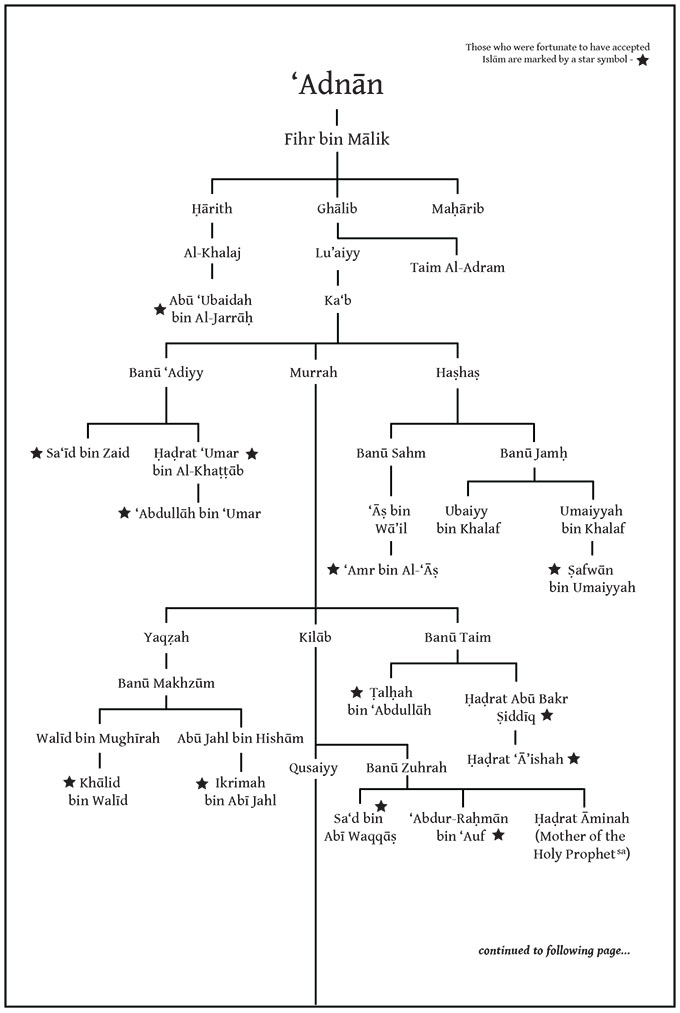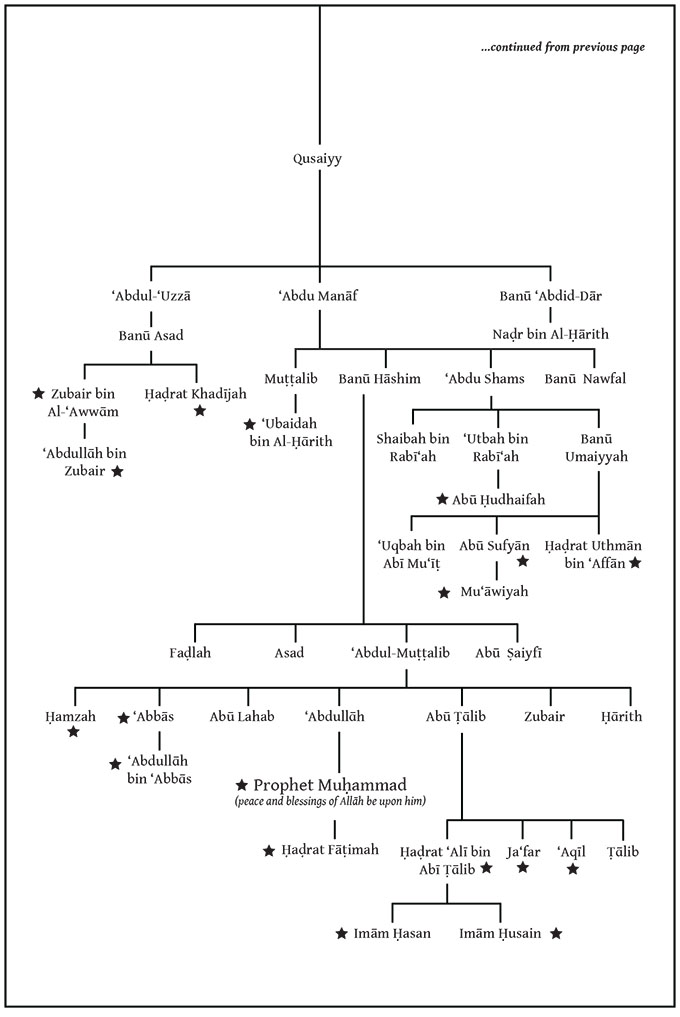
In the time of the Holy Prophetsa, the Quraish had been divided into many tribes. Sometimes, they would fall into conflict as well but the misfortune of formal warfare never rose.
Among these tribes, the genealogical tree of some clans and renowned individuals has been presented below. In the following tree, the names accompanied by the word ‘Banū’ refer to the names of individuals to which the renowned clans of the Quraish were attributed during the time of the Holy Prophetsa. Those with which this word has not been written are merely the names of prominent individuals. Names written within a lined border are the noteworthy individuals of the time of the Holy Prophetsa. The names of Muslims have been displayed in a circle and the names of the disbelievers are in a square outline. Since every name has not been shown in this tree, names written on the same line, should not be misconceived as children of the same mother and father. In fact the intention is merely to imply that they all belong to the same tribe.


In this tree, it may seem as if certain individuals have no tribes attributed to them, although they possessed notable fame among the Quraish. The reason is that it was a custom among the tribes of Arabia that until the children of one person remained in alliance and unity; they were attributed to a common forefather. However, when enmity and conflict spurred among them, divided parties disliked being attributed to the same ancestor. Instead, every tribe would identify itself with any other eminent individual under that same ancestor. It is for this very reason that we find that none of the children of Qusaiyy are attributed to him, rather, some of them became the Banū Hāshim, others the Banū Umaiyyah, still others the Banū ‘Abdid-Dār, etc., though none of them was as renowned as Qusaiyy himself.